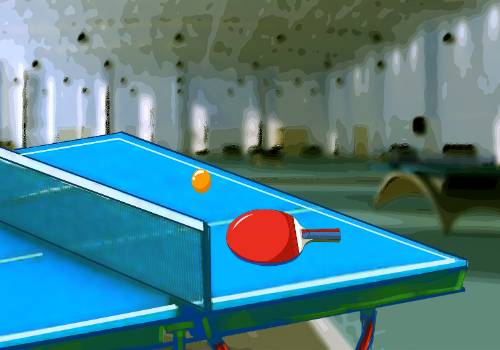-- Boasting the world"s longest and most extensively used high-speed rail network, China has been helping multiple countries construct and upgrade their rail transit with its advanced railway technology.
 (资料图片仅供参考)
(资料图片仅供参考)
-- Through multilateral mechanisms such as the Belt and Road Initiative and the Regional Comprehensive Economic Partnership, China"s sci-tech achievements have delivered new options in 5G communications, biomedicine and numerous realms, while also providing growth momentum.
-- Over recent years, China has adopted various policy tools to promote global sci-tech cooperation, opened up large-scale scientific infrastructure, jointly established R&D platforms and expanded the scope, field and scale of open innovation.
BEIJING, March 9 (Xinhua) -- From the Yutu-2 lunar rover roaming on the "dark side" of the moon to the Fendouzhe submersible exploring the 10,000-meter deep ocean, and from salt-tolerant rice growing in tidal flats near the sea to Chinese unmanned equipment guided by the Beidou Navigation Satellite System to help African farmers boost crop yields ... the saga of China"s sci-tech innovation continues to unfold.
During the ongoing "two sessions," Chinese President Xi Jinping emphasized the imperative to accelerate the implementation of the innovation-driven development strategy, saying that speeding up efforts to achieve greater self-reliance and strength in science and technology is the path China must take to advance high-quality development.
Over 10 years into the nation"s innovation-driven development strategy, China saw its ranking in the Global Innovation Index jump from 34th in 2012 to 11th last year, with the economy expanding at an average annual rate of 6.6 percent between 2013 and 2021, contributing over 30 percent to world economic growth.
When reinforcing its strength in science and technology, the country has also been committed to sharing its technology with worldwide partners and cooperating to improve global science and technology governance.
INNOVATION-DRIVEN DEVELOPMENT
"The close attention paid by the government and the country to innovation as an engine of growth is paying off," said Daren Tang, director general of the World Intellectual Property Organization.
Indeed, China"s historic progress in building an innovative country attests to the judgment: science and technology are the primary productive force, talent the primary resource and innovation the primary driver of growth.
The innovation-driven development strategy put forward at the 18th National Congress of the Communist Party of China (CPC) has led China to join the ranks of the world"s innovators, with success on various fronts over the past decade.
The country has expanded its research and development (R&D) expenditure from 1 trillion yuan (about 145 billion U.S. dollars) to 3.09 trillion yuan (about 445 billion dollars) in the past decade, the second highest in the world, with its R&D intensity rising from 1.91 percent to 2.55 percent, according to Ministry of Science and Technology.
This screen image captured at Beijing Aerospace Control Center on Feb. 9, 2023 shows Shenzhou-15 taikonaut Fei Junlong waving after exiting the space station lab module Wentian. (Xinhua/Liu Fang)
Furthermore, China has coordinated its innovation blueprint with its strategy for invigorating China through science and education, which underscores development based on progress in science and technology and the workforce development strategy focusing on fostering high-quality talent. Now the country has become home to the largest cohort of R&D personnel around the globe.
Apart from calling for moving faster toward self-reliance in science and technology, Xi in late January pledged more efforts to ensure better allocation of innovation-related resources to make the country a global pacesetter in major sci-tech areas and a pioneer in advanced interdisciplinary fields, and ensure that China will become a major world hub for science and innovation as soon as possible.
GLOBAL PUBLIC GOODS
The implications of China"s innovation-driven development extend beyond its borders.
Boasting the world"s longest and most extensively used high-speed rail network, China has been helping multiple countries construct and upgrade their rail transit with its advanced railway technology.
World Bank Vice President for South Asia Martin Raiser said China"s rail technology would bring urban development, tourism and regional economic growth.
An Fuxing bullet train runs on the China"s section of the China-Laos Railway on Jan. 27, 2023. (Photo by Xu Zhangwei/Xinhua)
Take the China-Laos Railway, a landmark Belt and Road project. Since operations began in December 2021, landlocked Laos has become a land-linked hub in Southeast Asia. The railway"s Lao section has created more than 110,000 local jobs.
Through multilateral mechanisms such as the Belt and Road Initiative and the Regional Comprehensive Economic Partnership, China"s sci-tech achievements have delivered new options in 5G communications, biomedicine and numerous realms, while also providing growth momentum.
Gu Qingyang, a scholar at the National University of Singapore, said the extensive application of China"s sci-tech accomplishments not only leads to its domestic industrial upgrading, but also lends impetus to the neighboring areas.
Photo taken on Nov. 20, 2021 shows the venue of China 5G+ Industrial Internet Conference at the China Optics Valley Convention & Exhibition Center in Wuhan, capital of central China"s Hubei Province. (Xinhua/Wu Zhizun)
Similarly, at the World Economic Forum Annual Meeting 2023 earlier this year, Saadia Zahidi, the forum"s managing director, said, "when it comes to technology and innovation, much of what is being developed in China will change the world."
Given the size of its economy, China will help boost worldwide growth and inject optimism in the medium and long term, Zahidi told Xinhua.
GLOBAL SCI-TECH GOVERNANCE
China would never innovate behind closed doors. That"s why the country has been dedicated to advancing global governance in science and technology.
In late February, Xi restated his call for promoting the openness, trust and cooperation of the international science and technology community and making new and more significant contributions to the progress of human civilization.
Over recent years, China has adopted various policy tools to promote global sci-tech cooperation, opened up large-scale scientific infrastructure, jointly established R&D platforms and expanded the scope, field and scale of open innovation.
In a typical example, China has advocated expanding international cooperation in the space sector. Romanian astronaut Dumitru Prunariu said China "actually invited all countries to perform scientific experiments" on its Tiangong space station. In addition, the country also welcomes broader collaboration in deep space exploration.
China has engaged in sci-tech cooperation with more than 160 countries and regions, participating in global science projects such as the International Thermonuclear Experimental Reactor program -- one of the most ambitious energy projects in the world and the Square Kilometre Array -- an intergovernmental radio telescope project.
This aerial photo shows vehicles to be exported at a port in Lianyungang, east China"s Jiangsu Province, Jan. 13, 2023. (Photo by Geng Yuhe/Xinhua)
Meanwhile, the country"s accelerated transition from "Made in China" to "Created in China" shows the developing world how to uncover a development path suited to their own conditions.
China"s experience in education, scientific research and technology is "inspiring" to Arab countries, Mohamed Abdel-Fattah Moustafa, head of the Arab Union for Education and Scientific Research, told Xinhua.
Its cooperation with other developing countries in education, scientific research and technology localization will help "create a new international community based on cooperation, exchange of benefits and mutual win," he said.



































































































